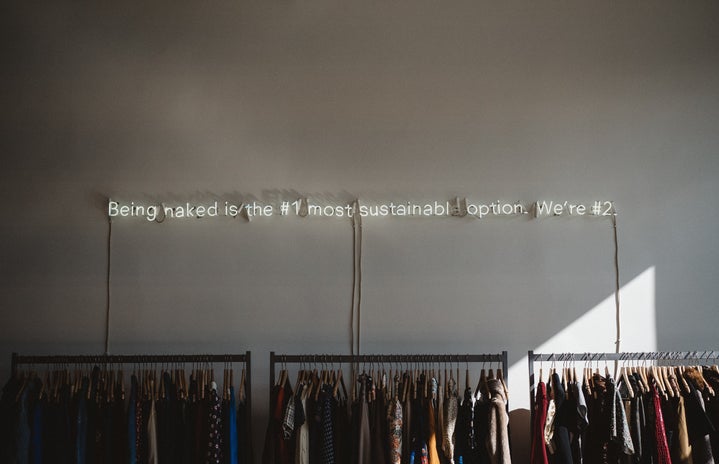It is a frustrating time for fashion and for the earth, and it is crucial that we start taking a closer look at our clothing purchases. Social media trends and online advertisements force feed consumers poorly-made clothing that will be deemed “out of style” within a matter of months. Having style does not mean having the new “it” item that is practically sold with an expiration date attached to its suspiciously low price tag. Not only are fast fashion brands detrimental to the environment but most treat their workers unfairly by providing them with inadequate wages, which allow these brands to sell clothing for cheap.
An easy way to build a more sustainable, stylish closet is to give more love and respect to basics. It is quite curious how “basic” has evolved into an insult. In the age of microtrends and fast fashion, more love and respect should be given to basics. Quality over quantity. Staple pieces that will remain in our closets for years to come rather than items from Shein that will end up in a landfill in a few months. Clothing should be an investment, not something meaningless and disposable. Look for well-made clothes from secondhand stores or sustainable brands that you know you will still like and wear at least a year from now.
If you are unsure about whether a brand is sustainable, I suggest downloading the “Good on You” app, which allows you to search brands and receive information on their environmental policies, labor practices, and treatment of animals. For example, if you search for Forever 21, you will find that their labor and environment score is “very poor” while their animal score is given the rating “it’s a start.” Below these ratings, there is also information on how the app has developed this rating. By contrast, Reformation has a labor and environment score of “good” as well as ample information on their eco-friendly policies. A common argument used to justify fast fashion purchases is the price, so I’ll admit this isn’t the fairest comparison seeing as Reformation is quite pricey, but I promise that it is possible to find sustainable clothes at low prices. Buying clothes from a thrift store will always be cheaper (often better quality as well) than buying from fast fashion brands.
I do not wish to preach or provide the false impression that I have perfect purchasing habits (I have certainly bought clothes in the past year that I eventually realized were trendy rather than stylish). Instead, I hope to encourage critical thinking around our clothing purchases for the sake of both our personal style and the environment.


